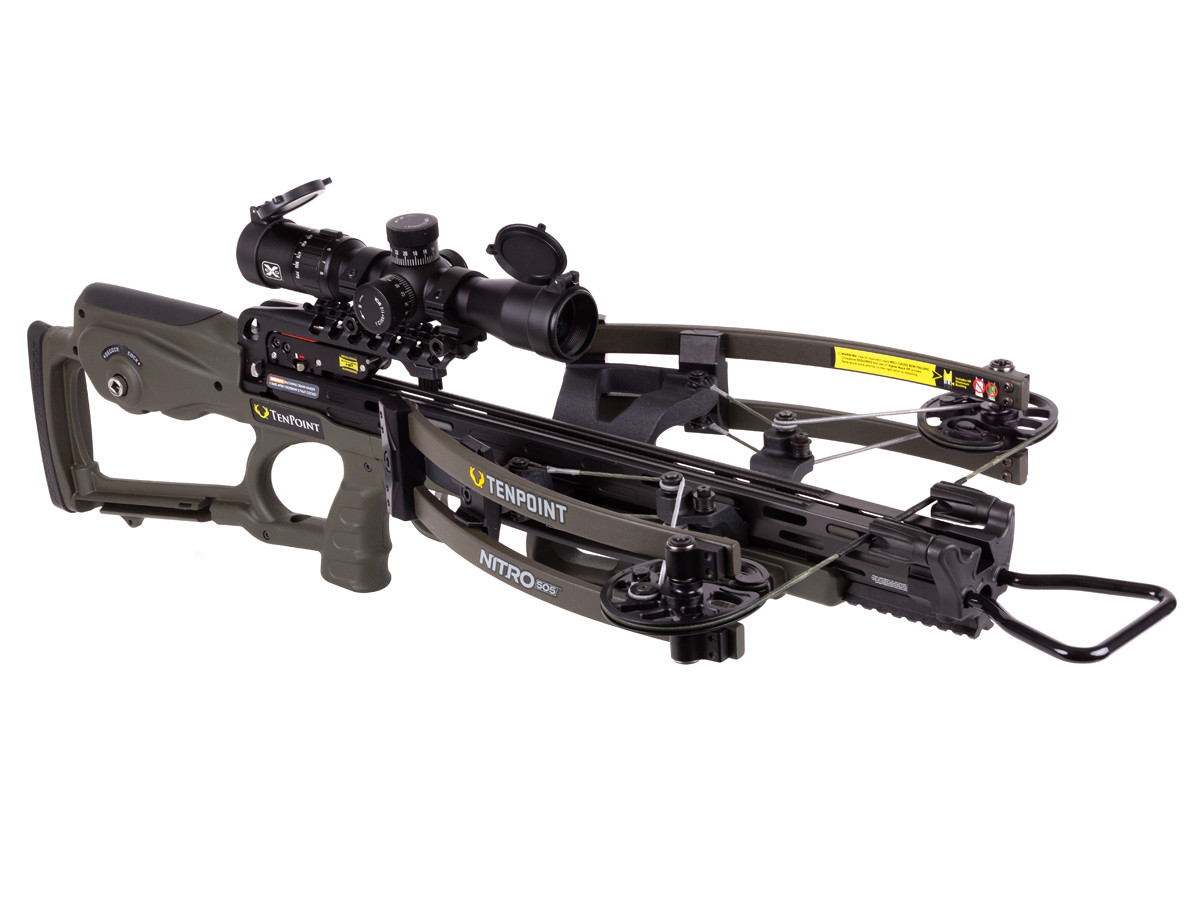Restringing a crossbow without a press requires patience, skill, and a good understanding of the process. While it may seem daunting at first, with the right tools and techniques, it is entirely possible to restring your crossbow safely and effectively at home. In this comprehensive guide, we’ll take you through each step of the process, ensuring a smooth and successful restringing experience.

Image: www.pyramydair.com
Understanding Crossbow Anatomy and Bowstring Tension
Before embarking on the restringing process, let’s first understand the anatomy of a crossbow and the significance of proper bowstring tension. The bowstring is the central component of a crossbow, responsible for storing and releasing energy that propels the arrow. Correct bowstring tension is crucial for accurate shooting, optimal performance, and overall safety.
Crossbows consist of a stock, a riser, and two limbs that are attached to the riser. The bowstring connects the two limbs, creating a potential energy reservoir when drawn back. The limbs, typically made of composite materials, are designed to withstand high tensile stress. The stock provides a solid base for the crossbow and houses the trigger assembly.
Tools and Materials for Restringing
Before starting, gather the necessary tools and materials:
- Bowstring (made of Dacron or high-modulus fibers)
- Bowstring wax
- Allen wrenches (for removing limbs)
- Clamps (for holding limbs)
- Stringer (for guiding the bowstring onto the limbs)
- Soft rags or towels
Safety Precautions
Restringing a crossbow involves handling high-tension components. Always prioritize safety:
- Wear safety glasses and gloves to protect your eyes and hands.
- Choose a clear and open workspace away from obstacles.
- Clear the area of children and pets.
- Never dry-fire your crossbow (firing without an arrow).

Image: rrzvfbgznh.blogspot.com
Step-by-Step Restringing Guide
-
Disassemble the Crossbow:
- Remove the quiver and any other accessories.
- Loosen the limb bolts using an Allen wrench.
- Carefully remove the limbs and lay them on a flat surface.
-
Prepare the New Bowstring:
- Apply a thin layer of bowstring wax to the bowstring.
- Center the bowstring and create a small loop at each end.
-
Clamp the Limbs:
- Use clamps to secure the limbs in place on a stable surface.
- Ensure the limbs are parallel and slightly separated.
-
Attach the String to the Lower Limbs:
- Position the bowstring over the lower limbs and hook the loops onto the lower limb bolts.
- Push the limbs down gently to create some tension on the bowstring.
-
Use a Stringer to Guide the String:
- This is where the stringer comes in handy.
- Attach the stringer to the lower limb loops.
- Slowly and smoothly guide the bowstring over the upper limbs.
- Ensure the string stays centered on the limbs.
-
Hook the Upper Loops:
- Once the string is over the upper limbs, hook the loops onto the upper limb bolts.
- Gradually release the tension on the stringer while tightening the upper limb bolts.
-
Tighten the Limbs:
- Slowly tighten the limb bolts evenly, increasing tension on the bowstring.
- Refer to the manufacturer’s recommended bowstring tension for your specific crossbow model.
-
Check String Alignment:
- Ensure the bowstring is centered on both limbs and riding in the designated grooves.
- If necessary, make minor adjustments to the upper or lower limbs to achieve proper alignment.
-
Lubricate and Reassemble:
- Apply a small amount of bowstring wax to the entire length of the bowstring.
- Reassemble the crossbow by inserting the limbs back into the riser and tightening the limb bolts securely.
- Replace the quiver and any other accessories.
Tips for Success
- Follow the instructions carefully and take your time. Rushing the process can lead to errors.
- Choose a high-quality bowstring designed for your specific crossbow.
- Use bowstring wax to reduce friction and prevent twisting.
- Apply moderate tension when tightening the limbs. Overtightening can damage the crossbow or the bowstring.
- If you encounter any difficulties or resistance, stop and reassess the situation.
- Don’t hesitate to seek professional assistance if needed.
How To Restring A Crossbow Without A Press
Conclusion
Restringing a crossbow without a press is a rewarding experience that empowers you to maintain your crossbow in optimal condition. By following the steps outlined in this guide, you can confidently restring your crossbow at home, ensuring a safe, successful, and precise shooting experience. Always prioritize safety, use the right tools, and take your time to achieve the perfect tension. As you become more proficient, you’ll find that restringing your crossbow is a skill that gives you a sense of accomplishment and satisfaction.